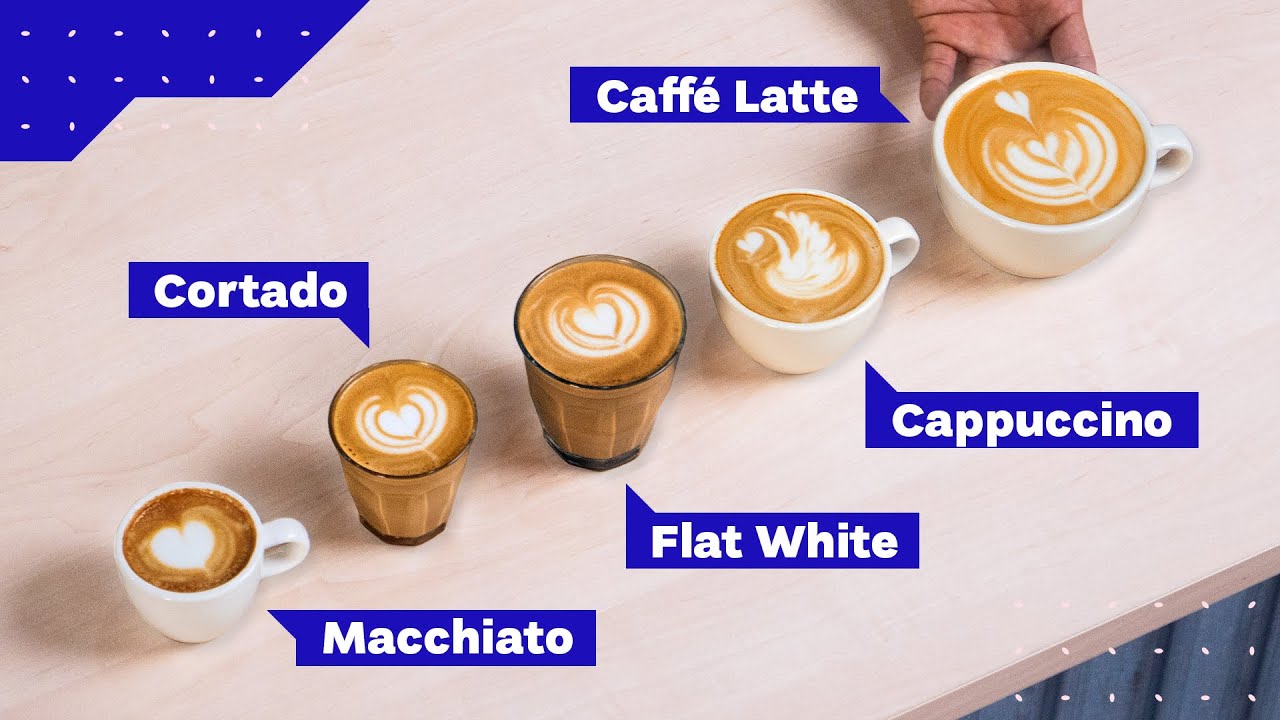Curious about the captivating world of coffee? Dive into the delightful differences between a latte and a cappuccino, two renowned espresso-based beverages that have enthralled coffee enthusiasts for decades. A latte, derived from the Italian caffè latte meaning “milk coffee,” is a harmonious blend of espresso and steamed milk, creating a smooth and creamy texture. With its rich taste and luxurious appearance, the latte offers an indulgent experience that captivates both the palate and the eyes. On the other hand, a cappuccino, originating from Italy, is a divine combination of equal parts espresso, steamed milk, and velvety milk foam. Its unique composition results in a perfect balance of flavors, showcasing the espresso’s robustness, the milk’s sweetness, and the foam’s airy lightness. Whether you fancy the milky elegance of a latte or the delicate layers of a cappuccino, exploring these espresso-based creations is a delightful journey that invites you to savor each sip, awakening your senses to the intricate artistry behind every cup. So, venture into the realm of latte vs cappuccino, and embrace the bewitching world of coffee craftsmanship.

Comparison: Latte vs Cappuccino
| Latte | Cappuccino | |
|---|---|---|
| Overview | A latte is a popular espresso-based drink that consists of steamed milk and a shot of espresso, topped with a small layer of foam. | Cappuccino is an Italian coffee beverage that combines equal parts of espresso, steamed milk, and milk foam, creating a harmonious balance of flavors and textures. |
| Origin | The latte originates from Italy, where it evolved from the traditional caffè latte. It gained popularity worldwide during the coffee culture boom. | Cappuccino has its roots in Italian coffee traditions and was first created in the early 1900s. It quickly spread throughout Europe and eventually became a staple in coffee shops worldwide. |
| Ingredients | A latte typically consists of a single shot of espresso, a generous amount of steamed milk, and a small layer of creamy foam on top. | Cappuccino consists of equal parts of espresso, steamed milk, and a thick layer of velvety foam. The foam is often dusted with cocoa or cinnamon for added flavor and presentation. |
| Texture | A latte tends to have a smoother and creamier texture due to the higher proportion of steamed milk. The foam layer is relatively thin, allowing the milk to dominate the overall mouthfeel. | Cappuccino boasts a richer and frothier texture, thanks to the larger amount of foam incorporated during the preparation. The foam provides a delightful lightness while sipping. |
| Serving Size | Traditionally served in a large, cylindrical glass or cup, lattes are often about 8 to 12 ounces in size. | Cappuccinos are typically served in smaller cups, usually around 6 ounces, to maintain the perfect ratio of espresso, milk, and foam. |
| Flavor | Latte’s flavor profile is characterized by the smooth and mellow combination of espresso and milk, with a slight sweetness and a mild espresso taste lingering in the background. | Cappuccino offers a well-balanced flavor, where the creamy milk and delicate foam soften the intensity of the espresso, resulting in a harmonious blend of flavors. |
| Popular Variations | Some popular variations of lattes include flavored syrups like vanilla, caramel, or hazelnut, as well as the trendy matcha latte, which incorporates powdered green tea. | Cappuccinos are often enriched with creative additions such as chocolate shavings, sprinkles, or even a dash of liqueur for an indulgent twist. |
Decoding the Espresso: Unraveling the Secrets of Cappuccino, Latte, Flat White, and More!
What is a Latte vs Cappuccino?
When it comes to coffee, there are numerous options available to suit every individual’s taste and preference. Two popular choices that often confuse coffee lovers are the latte and cappuccino. While both beverages are made with espresso and milk, they differ in terms of their ratios, texture, and presentation. In this article, we will explore the differences between a latte and cappuccino, helping you understand what sets them apart.
The Latte: A Creamy Coffee Delight
Latte is derived from the Italian caffè latte, meaning “milk coffee.” As the name suggests, the latte is primarily made with steamed milk and a shot or two of espresso. The milk-to-espresso ratio in a latte is generally higher, resulting in a creamier and milder flavor compared to other coffee beverages.
The process of making a latte involves pouring steamed milk over a shot of espresso, creating a beautiful combination of rich flavors. The milk acts as a velvety cushion, softening the intense taste of espresso. A latte is often topped with a small layer of foamed milk or milk foam art, enhancing both the visual appeal and taste of the beverage.
The Cappuccino: A Perfect Balance
Cappuccino, on the other hand, is an Italian coffee drink that originated in the early 20th century. It is made with equal parts of espresso, steamed milk, and milk foam. The name “cappuccino” comes from the Capuchin friars’ resemblance to the drink’s color, which consists of a dark brown base topped with a white foam layer.
The key distinction between a cappuccino and a latte lies in the milk-to-espresso ratio. In a cappuccino, the amount of milk used is relatively less compared to a latte. This results in a stronger espresso taste and a bolder flavor profile. The milk foam layer on top of the cappuccino provides a creamy texture and adds a touch of sweetness to the overall experience.
Texture Matters: Latte vs. Cappuccino
One of the significant differences between a latte and a cappuccino is their texture. A latte is known for its smooth, creamy consistency. The higher milk content in a latte creates a velvety texture that feels luxurious on the palate. It is the perfect choice for those who prefer a milder coffee flavor paired with a silky mouthfeel.
On the other hand, a cappuccino offers a more textured experience. The combination of equal parts of steamed milk and milk foam creates a light and airy foam layer, adding a delightful element of frothiness to each sip. The foam in a cappuccino contributes to the drink’s overall richness, making it an ideal choice for those who enjoy a stronger coffee taste and a slightly drier mouthfeel.
The Presentation: Latte Art and Cappuccino Art
Both the latte and cappuccino offer opportunities for artistic expression, but they differ in terms of presentation. A latte is often associated with intricate latte art. Talented baristas can create beautiful designs, such as hearts, leaves, or even portraits, using the milk foam layer on top of the latte. This adds an element of visual appeal that enhances the overall coffee-drinking experience.
On the other hand, a cappuccino is typically presented with a simple, classic design. The milk foam layer is evenly distributed, creating a smooth and uniform surface. While cappuccinos may not showcase elaborate art like lattes, the simplicity and elegance of their presentation remain a timeless choice for coffee enthusiasts.
Conclusion
In summary, while both the latte and cappuccino are made with espresso and milk, they differ in their milk-to-espresso ratio, texture, and presentation. A latte is a creamier coffee beverage with a higher milk content, offering a milder flavor and a smooth mouthfeel. On the other hand, a cappuccino strikes a perfect balance between espresso, steamed milk, and milk foam, resulting in a bolder taste and a textured experience. Whether you prefer the creamy luxury of a latte or the rich intensity of a cappuccino, both options provide a delightful coffee experience that can be enjoyed every day.

